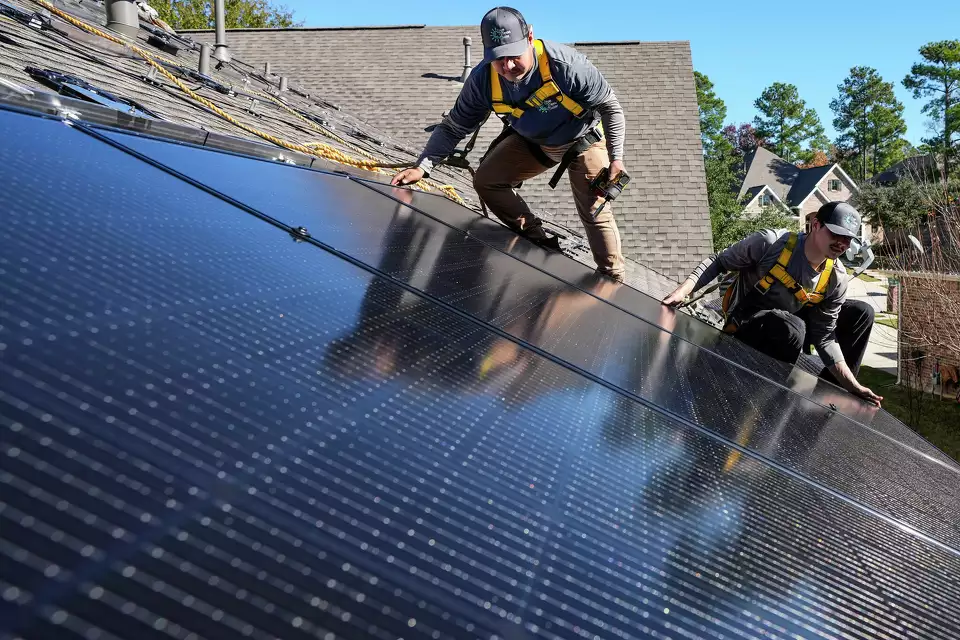Nonprofit Capital Good Fund offers solar loans for low, middle-income residents in the Houston area
time:2024-01-15 09:33:10 Views:0 author:Jinan Freakin Power Ltd.
Conroe resident Mickey Lee started working in sales for rooftop solar company True Texas Solar a year ago in what he described as his “retirement job,” learning about the benefits of solar and the unsavory business practices of some in the industry. But when Lee made the leap of trying to install rooftop solar on his own home, loan providers turned him down because of a bankruptcy on his financial record. Then he learned from his employer about Capital Good Fund, a nonprofit organization that works to create pathways out of poverty through loans and other financial services. The organization is offering Houston-area residents loans to go solar, and importantly for Lee, it does not take credit score into consideration. A $33,000 loan from Capital Good Fund covered the full cost of installing an 8.6 kilowatt solar system with a 20 kilowatt-hour battery at his home in December, with Lee happily taking photos of the installation he now owns as it happened.

“I can sleep at night knowing that even if ERCOT or Entergy announced today that they’re going to have rolling blackouts tomorrow, I don’t care, at least for my own purposes. It’s a peace of mind,” Lee said. Capital Good Fund launched its solar lending program at the end of 2021, beginning in Rhode Island, where the organization is based, and Massachusetts, said CEO Andy Posner. It expanded the program to Texas at the beginning of 2023 because of factors that make rooftop solar especially beneficial to Texans, Posner said: extreme heat, lots of sunshine, blackout risks and rising energy prices. The program is meant to make solar technologies more accessible to low- and middle-income households, who tend to pay more of their income toward energy bills yet find it more difficult to install solar panels because of the high upfront costs. Eligibility is capped for those that earn 120% of the area median income, which amounted to $106,300 for a Houston household of four in 2022.
Posner said he is concerned about a “bifurcated clean energy transition” in which the cost-saving potential of rooftop solar is not available to those who could benefit the most. “It’s hard to ask low- and moderate-income families to support with taxes or whatever that’s needed to drive emissions reductions if they don’t see any of the benefits of clean energy, whether that’s jobs or on their roof or cleaner air,” he said.The organization offers 25-year loans for solar adoption, with monthly payments and no prepayment penalty. The interest rate for the loans is either 7.99% with no closing fees, or the borrower can choose to “buy down” the interest rate to 3.99% by paying an extra 20% on top of the principal. Which option to choose depends on how quickly the lendee intends on paying off the loan, Posner said; he recommended choosing the no closing fees option if the lendee plans on paying it off in six years or less.A typical system for a low-income family costs $25,000 including equipment and installation, with monthly payments of around $158 if the lendee chooses the buydown option and $192 without, according to Posner. The typical system for a moderate-income household is about $37,000 to $40,000 as many choose to add batteries, he said.
One Capital Good Fund customer with an 8.8-kilowatt solar system saw her average utility bill drop to near zero from $151.94 per month before her install. Her loan was $22,963 with a monthly loan payment is $137.25, according to the nonprofit. If the borrower sells their house, they have to pay off the balance of the loan, according to Capital Good Fund.The first 50 lendees in the Houston area will also receive a $1,000 subsidy toward the principal 30 days after the first loan payment is made thanks to a $50,000 grant provided by JPMorgan Chase, Posner said. The grant is what limited Capital Good Fund’s initial solar lending efforts in Texas to Houston. The nonprofit has made 154 solar loans total, though only 10 in the Houston area. High-interest rates have slowed residential rooftop solar adoption across Texas. And of the major metropolitan areas in the state, “Houston tends to be picking up the tail end from a solar adoption standpoint,” said Derek Evans, chief revenue officer of Native Solar, a solar installer that has partnered with Capital Good Fund.
That’s in part because municipal-owned utilities in San Antonio and Austin offer incentives for solar adoption, as does transmission and distribution utility Oncor in the Dallas area. CenterPoint, the Houston-area transmission and distribution utility, does not, Evans said.The variety of retail electricity providers available to Houston-area residents can also make going solar more confusing, he said. Texas Power Guide, a site that helps Texans choose an electricity plan, and Solar United Neighbors, a nonprofit advocating for solar adoption, have free guides to electricity plans for Texas residents with solar. In addition, misleading sales practices by some in the industry can make it more difficult for low- and middle-income households to access rooftop solar that benefits them. For example, some loans for solar installations come with closing fees that buy down the interest rate, but unlike with Capital Good Fund, these fees are hidden, making the loan appear cheaper than it is.When helping customers interested in solar, the goal is to make the loan payments and post-solar utility payments similar to what the customer was previously paying in energy bills, Evans said. “It’s not necessarily that (rooftop solar is) unaffordable. It’s making that mental leap to say, instead of an electric bill, I’m now paying off this loan,” he said. Lee, the Conroe resident who received a Capital Good Fund loan, said he became interested in rooftop solar because he believes energy costs will continue to rise. “I know what my cost for power is going to be for the next 30 or 40 years, however long those panels last. That’s a form of insurance against inflation, against escalating fuel costs,” he said.




